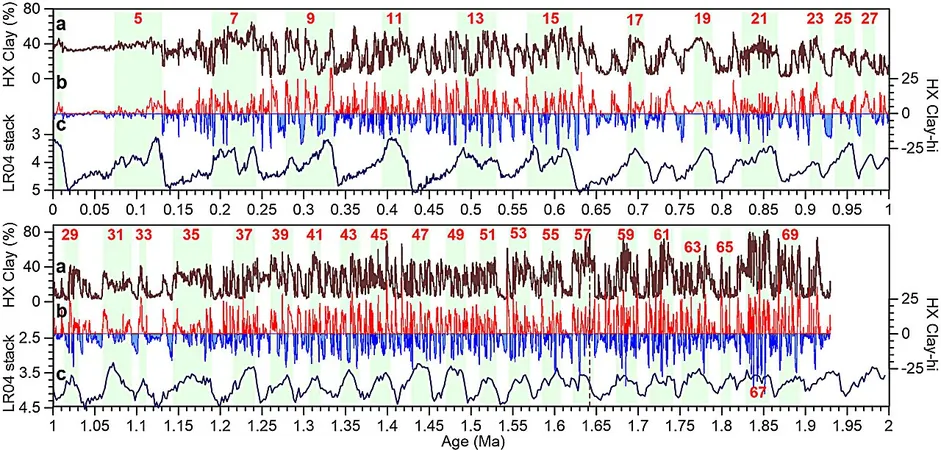
Scientists Unravel Secrets of Ancient Monsoon Instability in China's Weihe Basin
2025-06-12
Author: Wei
Groundbreaking Study Reveals Variable Monsoon Patterns
A trailblazing study led by scientists from the Institute of Earth Environment at the Chinese Academy of Sciences has unveiled shocking truths about the East Asian summer monsoon's past. Published in the Proceedings of the National Academy of Sciences, this research challenges long-held beliefs about climatic stability during warm periods, suggesting that the monsoon has experienced frequent and drastic shifts even in epochs once thought to be steady.
Unlocking Two Million Years of Climate History
The researchers dove deep into a 512-meter sediment core from the famed Weihe Basin in central China, piecing together a climate narrative spanning two million years. Their groundbreaking analysis indicates that millennial-scale fluctuations in the monsoon were not just rare events; they were frequent occurrences during interglacial periods. Surprisingly, these shifts weren’t influenced by distant ice sheets at high latitudes but were primarily driven by changes in solar insolation at lower latitudes.
Challenging Established Climate Beliefs
Prof. Sun Youbin, the lead author of the study, stated, "Our findings disrupt the traditional view of climatic stability in warm epochs. Instead, they reveal that solar forcing, operating independently of large ice sheets, plays a critical role in triggering unexpected hydrological transformations." This paradigm shift in understanding serves as a wake-up call regarding the complexity of climate systems.
Deciphering Solar Patterns and Their Impact
Using advanced spectral analysis of paleolake sediments, the research team identified distinct patterns recurring every 11,000 and 5,500 years. These intervals align with peaks in solar radiation, indicating they were likely the driving force behind alternating cycles of drought and rainfall in East Asia. This new evidence adds a valuable layer to our understanding of historic climate dynamics.
A Drought-Laden Future?
The implications of this study are staggering. Under the current orbital configurations, experts predict a potential decline in the strength of the East Asian monsoon in the coming millennia. This shift could escalate the risk of prolonged droughts, posing a significant threat to agriculture and water security in the region.
The Bigger Picture: Low-Latitude Mechanisms Matter
By shedding light on the roles of interglacial climate dynamics, this research emphasizes the importance of low-latitude processes in achieving accurate hydroclimatic forecasts. As the world grapples with climate change, understanding these ancient patterns could provide crucial insights for future climate resilience strategies.




 Brasil (PT)
Brasil (PT)
 Canada (EN)
Canada (EN)
 Chile (ES)
Chile (ES)
 Česko (CS)
Česko (CS)
 대한민국 (KO)
대한민국 (KO)
 España (ES)
España (ES)
 France (FR)
France (FR)
 Hong Kong (EN)
Hong Kong (EN)
 Italia (IT)
Italia (IT)
 日本 (JA)
日本 (JA)
 Magyarország (HU)
Magyarország (HU)
 Norge (NO)
Norge (NO)
 Polska (PL)
Polska (PL)
 Schweiz (DE)
Schweiz (DE)
 Singapore (EN)
Singapore (EN)
 Sverige (SV)
Sverige (SV)
 Suomi (FI)
Suomi (FI)
 Türkiye (TR)
Türkiye (TR)
 الإمارات العربية المتحدة (AR)
الإمارات العربية المتحدة (AR)